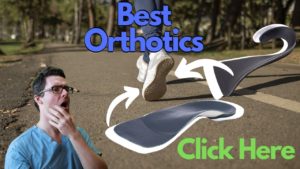Ball of the Foot Pain
Hammer Toe Surgery Recovery Time [Best Home Treatment & Recovery]
How long is hammer toe surgery recovery time? It can get to 50% at approximately 6 weeks, then 75% at 12 weeks and 95% at 6 months! Make it FASTER!
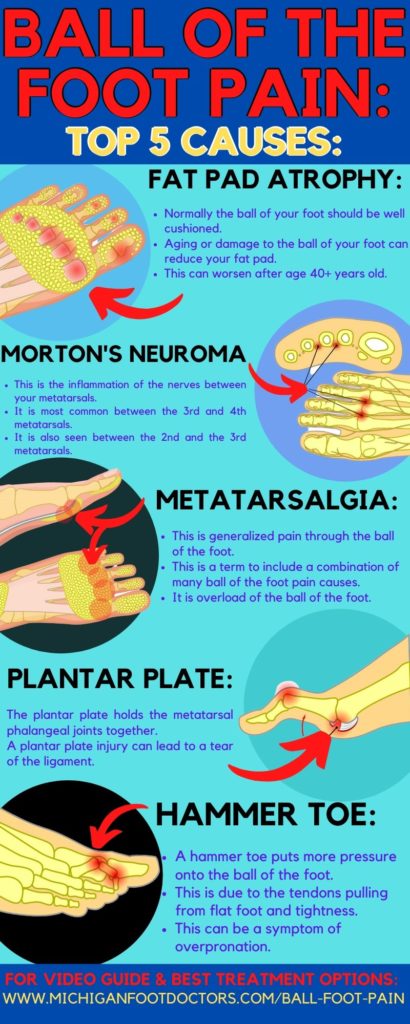
Table of Contents
Ball of the Foot Pain Pictures & Photo Gallery:
Look:
- Metatarsalgia: which means generalized foot pain without a specific cause.
- Second toe capsulitis: this is the inflammation of the second toe joint capsule.
- Capsulitis is related to hammertoe formation, and can lead to a plantar plate tear. There is some overlap between these three disorders. As they get worse tearing and ligament damage can occur.
- Morton’s neuroma: this is the damage and inflammation to the nerves between and underneath the metatarsal joints.
- Fat pad atrophy of the ball of the foot: this is the loss of cushioning in the ball the foot.
- Plantar Plate Tear: A plantar plate tear is ripping of the ligaments holding the toe together.
So, click on the photo gallery to see the specific causes of your ball of the foot pain!
Click on the photo gallery to see the specific causes of your ball of the foot pain!
Hammer Toe Surgery Recovery Time [Best Home Treatment & Recovery] Overview:
- Recovery from hammer toe surgery can take up to a couple of short months to completely return to normal.
- With any surgery, it is common to have pain and swelling for weeks to months.
- How long is hammer toe surgery recovery time? It can get to 50% at approximately 6 weeks, then 75% at 12 weeks and 95% at 6 months! Make it FASTER!
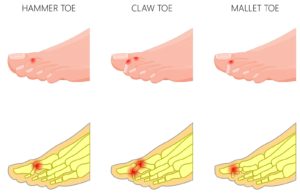
What is hammer toe?
- A hammer toe is a deformity in one or multiple toes.
- This hammer toe is usually the result of a tight tendon causing the toe to curl.
- Certain injuries to your toes can also create hammer toe.
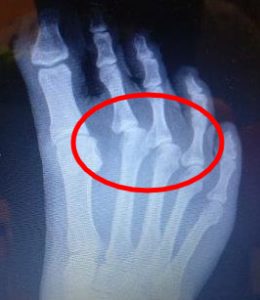
Hammer toe symptoms:
Pain comes with hammer toe, whether it be from your joint rubbing on your shoe or unwanted pressure applied to your toe while you walk or stand. This causes callouses, corns and even sores. Furthermore, flexibility of the toe is lost until it is no longer able to straighten on its own.
- Pain
- Callouses
- Corns
- Sores
- Loss of flexibility to toe(s)
- inability to straighten toe(s)
How is hammer toe diagnosed?
Hammer toe can be diagnosed simply by physical exam. However, imaging such as x-rays may be necessary to ensure correct diagnosis.
- History and physical.
- Physical exam
- x-ray
- Examination.
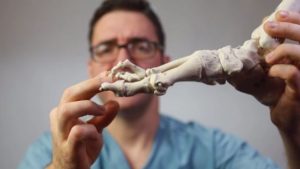
Types of hammertoe surgery:
- Flexor tenotomy.
- Arthroplasty of the hammertoe.
- Fusion of the proximal interphalangeal joint.
- Joint replacement surgery of the metatarsal phalangeal joint.
Hammer Toe Surgery Recovery Time:
- Humor to surgery recovery time can take a long time for a shorter amount of time depending on the type of procedure performed.
- Hammertoe can be flexible but it can also be end-stage arthritis with absolutely no flexibility.
Proximal interphalangeal joint fusion:
Postop visit number one:
- In the first week Sutures will still be in place.
- An x-ray will be taken.
- You will still be in addressing during this appointment.
Visit number two (Week 3):
- At this point sutures are removed and the skin has mostly healed.
- At this point a bandage can be further reapplied, or the patient can move towards a lighter bandage and move back into shoes.
Visit number three (Week 5):
- At this point the patient is generally back in two normal shoes, but there is some still some pain and stiffness to the toe.
- It is normal to have continued stiffness and soreness at this point.
Visit 4 (8-10 weeks):
- At this point the patientis usually feeling much less stiffness and swelling.
- You can still take a significant portion of time to feel 100%.
- At roughly 12 weeks, it is estimated that the final result is 75%.
At 6 months:
- At this point it is estimated that the patient is at roughly 90 to 95% of the final product.
At 12 Months:
- At this point it is estimated that the patient is at about 100% of final product from surgery.
Flexor or extensor to anatomy surgery recovery time:
- This is a percutaneous surgery that can generally be performed in office.
- The benefit is that generally no sutures are needed, and a Band-Aid may be needed for one to two weeks.
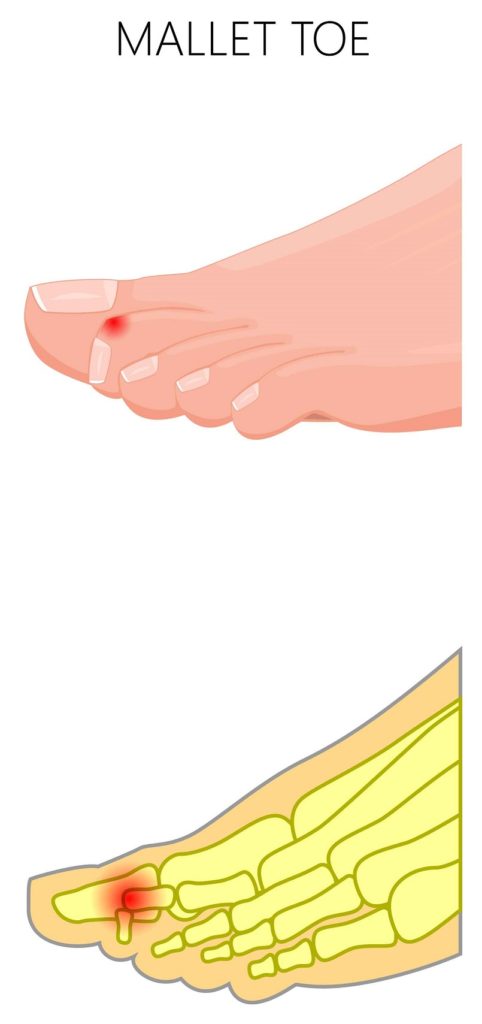
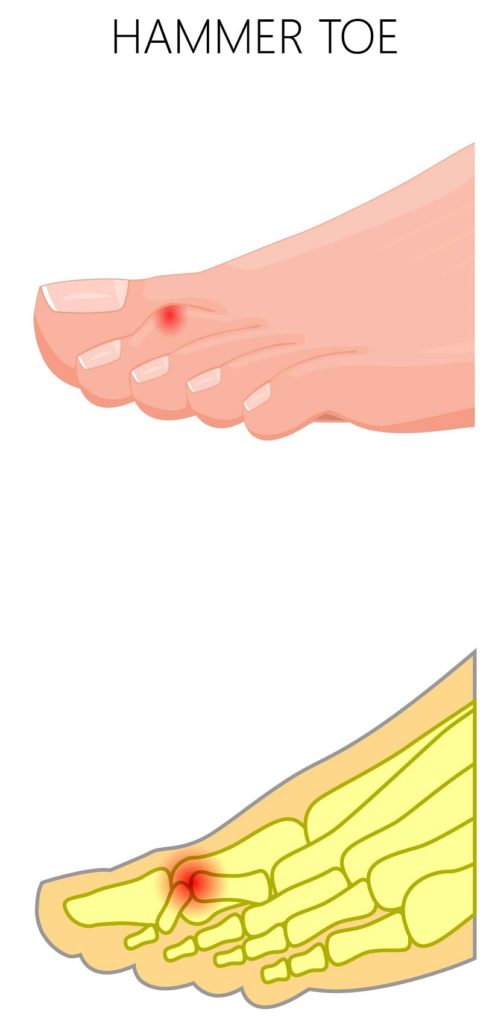
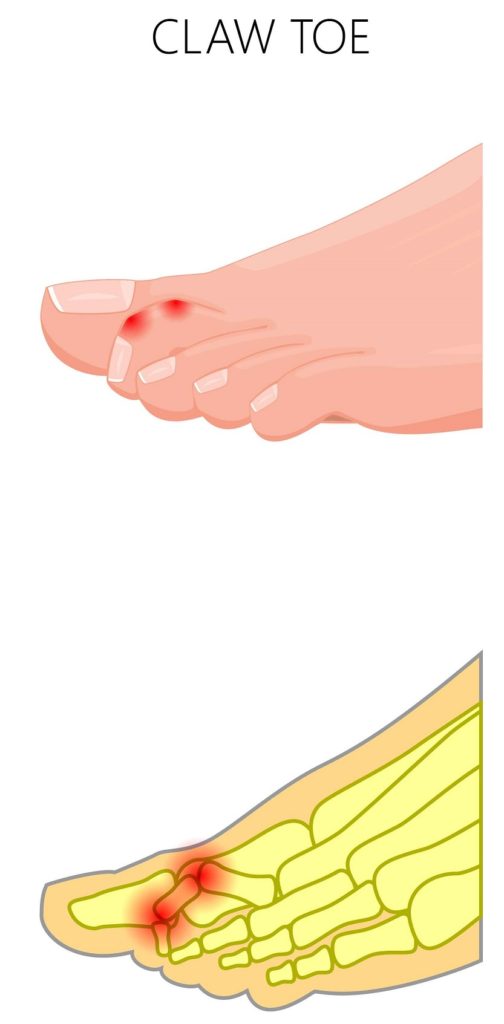
Ball of the Foot Pain Treatment Infographic:
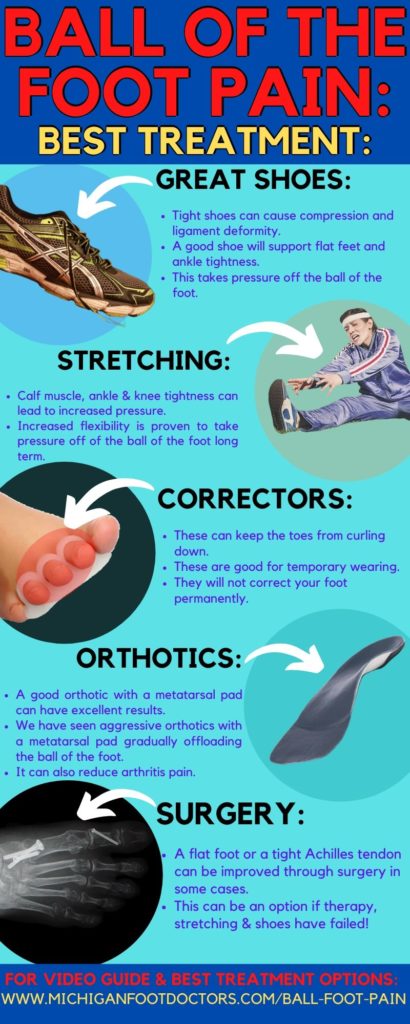
Ball of the Foot Home Treatment:
- Consider taping, orthotics, and great shoes as a combination to fix your foot problem.
- Products are not always necessary to fix your problem.
- The key is correcting the biomechanical problems that are leading to forefoot overload.
- Foot overload means too much pressure in the ball of the foot.
- Generally, something called ankle joint equinus can lead to too much pressure in the ball of your foot. This means your ankle is not flexible enough to move up and down.
- Ball of the foot pain treatment consists of two phases, first is control inflammation, next is to control bio-mechanics.
Remove Control Inflammation:
Massage & Ice Products:
- The metal ball is one of my personal favorites.
- This works great for your arch, less for the ball of the foot.
- These can help relax the arch or heel ligaments, leading to less pressure in the ball of the foot.
- Pills, creams, and ice will never completely fix your problem alone. What they will do is reduce the pressure on the area.






Menthol Based Gels:
- Biofreeze is one of our favorites.
- These gels have been studied to work 2x as long as ice.
- This works great for the ball of the foot.
- Consider using these as options when resting on the couch or going to sleep at night.








Massage Sticks:
- These can work great for loosening your muscles.
- This is means for your hamstring and calf muscles. This can loosen the ankle tightness, putting pressure on the ball of your foot.
- This allows less tightness and pressure on the ball of your foot.






Ball of the Foot Stress Relief.
- The key is to prevent future pain.
- If you can get rid of the pain and swelling, this will let you start walking normally.
- If you can walk normally, the vast majority of your pain should gradually start to go away.
- This means proper cushion, proper stability, and pressure relief from the front of your foot.
- This will relieve pressure from your big toe, your 2nd toe, your Morton’s neuroma, your plantar plate, hammertoes and joint capsules.
Best Metatarsalgia Shoes:
- Getting a great supportive pair of shoes will make sure that there is pressure removed from the ball of your foot.
- This is especially important if you have metatarsalgia, Morton’s neuroma, 2nd metatarsal overload syndrome, and capsulitis!
- Consider shoes combined with a good supportive orthotic for the best pain relief!
- The following link will show you what our favorites are.
Best Ball of the Foot Insoles:
- These are our recommended orthotics & insoles.
- There are different types of different shoes.
- Women’s shoes usually need a less bulky orthotic but allow for less correction.
- A full-length orthotic requires a running shoe, boot, or comfortable walking/dress shoe.
Best Full-Length Orthotics:
- Full-length orthotics are the most recommended type for the ball of the foot pain.
- Be aware that if they are too uncomfortable, it might be worth starting with a less corrective pair.
- Eventually, you can then work your way up to these.








Best Dress Shoe Orthotics:
- These are a stronger option for shoes with tight dress shoes.
- Just be aware that less corrective orthotics & tight shoes are usually not a good combination.






Best 3/4 Length Orthotics:
- These may be a good option for the ball of the foot if the full-length orthotics are too tight or too uncomfortable.


Get A Great Dynamic Stretch:
- It is possible to stretch on your own, but these products can also really help!
- Personally, I have the stationary block set up in my kitchen to stretch every day multiple times while getting my coffee!
- This will take pressure off of the ball of your foot.








Ball of the Foot Pain

